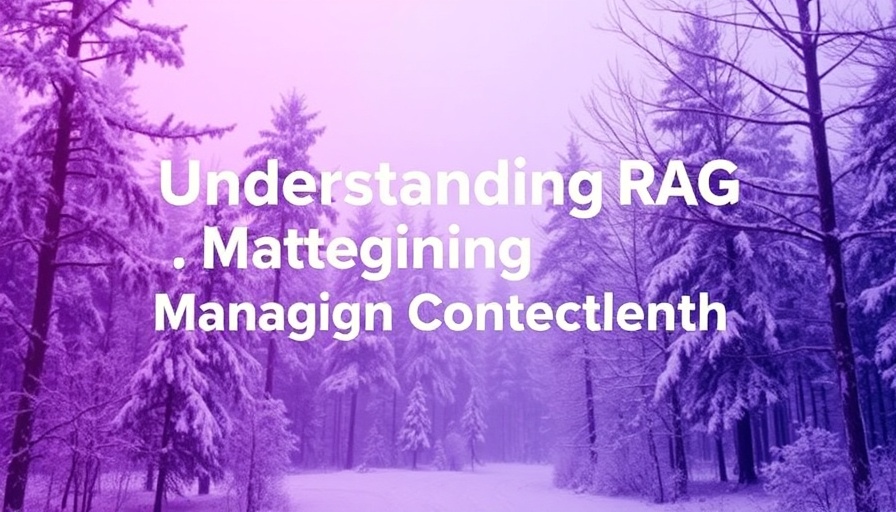
The Shift Toward Longer Contexts in RAG Systems
As large language models (LLMs) evolve, the increase in context length from what was initially capped at around 2048 tokens to the staggering limits of 128,000 tokens and beyond in models like GPT-4 Turbo and Claude has sparked significant conversation in the tech community. This transformation opens new avenues for managing complex queries and producing coherent, context-aware responses, especially in fields requiring deep document analysis.
In Retrieval Augmented Generation (RAG), which blends information retrieval with language modeling, the challenge rests on effectively incorporating this lengthy context without losing relevancy. The ability to process extensive amounts of retrieved information poses both advantages and hurdles for AI developers and businesses alike.
Understanding Context Length: Advantages and Challenges
Long context models can substantially enhance the performance of RAG systems by allowing for more extensive documents to be processed. They facilitate the retrieval process by eliminating redundancies and retaining information from the entire context, significantly improving the scope of responses generated by LLMs.
However, this advanced capability comes with challenges. As noted in research, factors like computational demands and the risk of losing context in the middle of extensive texts can hinder accuracy. While models can retrieve a plethora of documents, their performance may begin to decline after certain context thresholds, indicating that longer isn't always synonymous with better.
Strategies for Managing Length in RAG Systems
To tackle the complexities inherent in extending context lengths, a variety of strategies have emerged:
- Document Chunking: This straightforward method breaks documents into smaller segments, which helps maintain context integrity and reduces the risk of redundancy.
- Selective Retrieval: This strategy filters large datasets to retain only the most relevant information, allowing for better precision in LLM queries.
- Targeted Retrieval: A sophisticated approach aiming to optimize retrieval based on the user's intent, especially in specialized fields like finance or medicine.
- Context Summarization: By applying advanced summarization techniques, systems can condense crucial details into an accessible format that fits LLM input limits without sacrificing essential information.
Practical Insights for Executives in Digital Transformation
For executives steering their companies through digital transformation, understanding these nuanced strategies can be beneficial. RAG systems bolstered by long context LLMs promise to simplify document workflows and heighten accuracy in dynamic environments like legal services, customer support, and data-driven decision-making.
However, organizations must focus on the right balance of context management techniques to yield optimal results. Selecting the appropriate model and data flows is crucial to capitalize on these technologies' potential while mitigating risks.
Conclusion: Moving Forward with Long Context RAG Models
The future of RAG combined with long context models unfolds immense possibilities for enhancing business functions. As LLMs continue to evolve, they will shape how enterprises engage with information, promoting efficiency and accuracy across various industry operations. Yet, remaining vigilant about context limits and performance thresholds will empower organizations to make informed decisions about their AI strategies.
Ultimately, the empowerment of RAG systems through long context models sets a promising stage for AI's role in the future of business, emphasizing the importance of strategic implementation.
 Add Row
Add Row  Add
Add 




Write A Comment